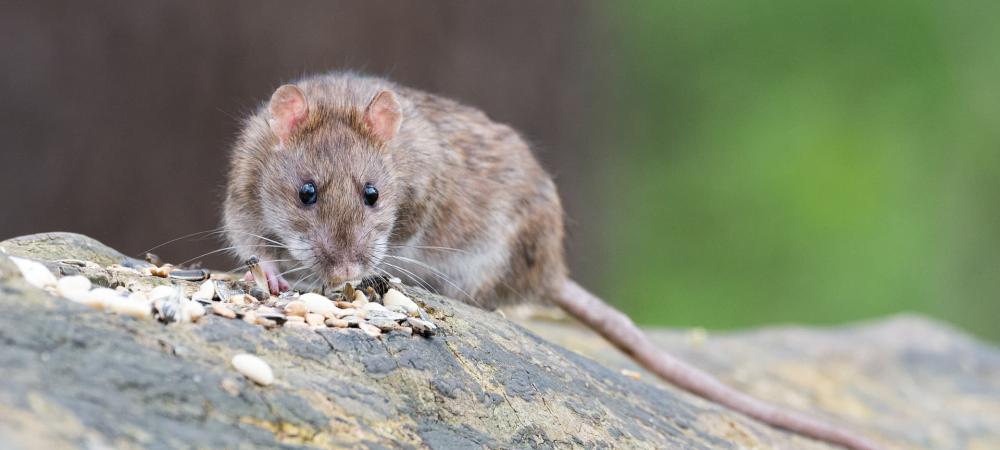Winter Rodents to Watch Out For in Arizona

Rodents pose a significant risk in Arizona during the winter months due to their behaviors and habits in colder temperatures. As the mercury drops, these pests are driven to seek shelter, food, and water sources indoors, increasing the likelihood of infestations. In this article, we'll provide information on how to identify, prevent, and eliminate these winter pests.
Signs of Winter Rodents in Arizona
- Droppings: Finding rodent droppings is one of the most common signs of a rodent infestation. These droppings are typically small, dark, and pellet-like. If you notice them in your home or property, it is a strong indication that rodents are present. Rodent droppings can spread bacteria and diseases, posing health risks to humans and pets.
- Gnaw marks: Another recognizable sign of winter rodents is gnaw marks. Rodents have a constant need to gnaw on things to keep their teeth from growing too long. Look for chewed wires, wood, or plastic materials. Rodents can cause structural damage to your property, compromising its integrity and costing you money in repairs.
- Nests: Rodents, such as house mice and roof rats, build nests in secluded spaces like wall voids, crawl spaces, and even inside insulation. If you come across shredded materials, such as paper, fabric, or cardboard, it could be a sign of a rodent nest. Nests can provide shelter and warmth for rodents during the colder months.
- Grease marks: As rodents navigate through your property, they leave behind greasy marks along their regular paths. These marks can be found along baseboards, walls, or even on pipes. Grease marks are caused by the oils and dirt on the fur of rodents and can be a clear indicator of their presence.
- Strange noises: Hearing scratching, scampering, or squeaking sounds, especially at night, can be a sign of rodents. Rodents are nocturnal creatures and are more active during the winter months as they seek shelter and food sources indoors. If you suspect a rodent infestation, listen for these sounds.
Common Types of Winter Rodents in Arizona
Winter in Arizona brings relief from scorching temperatures but also invites rodents into our homes. These small mammals seek warmth and shelter, becoming pesky housemates. In this list, we will explore common types of rodents in Arizona homes during winter. From crafty mice to persistent rats, let's learn how to effectively deal with these unwelcome guests.
Roof Rats
- Behavior: Highly adaptable and prefer warmer climates.
- Habitat: Nest in trees, attics, and crawl spaces.
- Risks: Can cause damage to structures and electrical wires and may carry diseases.
House Mice
- Behavior: Excellent climbers and prolific breeders.
- Habitat: Nest in wall voids, attics, and basements.
- Risks: Contaminate food, spread disease, and cause structural damage.
Pack Rats
- Behavior: Collect shiny objects and build nests with various materials.
- Habitat: Nest in trees, abandoned buildings, and vehicles.
- Risks: Cause damage to property and spread diseases.
Pocket Gophers
- Behavior: Excellent burrowers that create extensive tunnel systems.
- Habitat: Prefer sandy and well-drained soils.
- Risks: Gnaw on irrigation lines, electrical cables, and damage crops.
Norway Rats
- Behavior: Excellent swimmers and breeders.
- Habitat: Nest in burrows, sewers, and crawl spaces.
- Risks: Carry diseases, contaminate food, and cause structural damage.
Controlling these winter rodents is important to prevent property damage and mitigate health risks. Professional pest control services that specialize in integrated pest management can effectively address infestations and prevent future problems.
Preventing Rodents During the Winter: Essential Tips for Arizona Residents
Rodents can become a nuisance during the colder months in Arizona as they seek shelter and warmth indoors. Taking preventive measures to keep these common pests away is crucial to protect your home and health. Here are some effective strategies to prevent rodent infestations during the winter season.
Sealing entry points is key. Rodents can squeeze through tiny cracks and gaps, so it's essential to inspect your home for any potential entry points and seal them promptly. Focus on areas such as windows, doors, vents, and utility openings to ensure a tight seal.
Maintaining cleanliness is vital. Rodents are attracted to food sources, so it's crucial to eliminate any potential food temptations. Keep your kitchen clean and tidy, store food in airtight containers, and promptly clean up spills and crumbs. Regularly dispose of garbage and remember to keep garbage cans tightly sealed.
Remove or minimize potential rodent habitats. Declutter your home and remove any unnecessary cardboard boxes or piles of debris that could serve as attractive nesting sites for rodents. Trim shrubs and trees away from your home's exterior to keep your yard well-maintained.
Consider utilizing bait stations and traps. If you suspect rodent activity, strategically place bait stations or traps in areas where rodents are likely to frequent. However, it's essential to handle this aspect of pest control with caution to prevent harm to children, pets, or non-target wildlife.
Contact the Local Rodent Control Experts
By implementing these preventive measures, you can significantly reduce the risk of a rodent infestation during the winter months in Arizona. If you're dealing with a persistent rodent problem, contact Bug Wiser Fumigation and Pest Services. Our professional Sierra Vista pest control services offer comprehensive solutions for Arizona homeowners. Stay proactive and protect your home and loved ones from the potential health issues associated with rodent infestations.
